The 9 Most Important Facts About Mobile Advertising
eMarketer predicts that mobile advertising costs will increase to nearly $ 37 billion in 2016, compared with $ 8.4 billion in 2012 (display and contextual).
1. Smartphone sales for 2014 will amount to more than 1 billion units
According to IDC, smartphone sales for the first time will exceed 1 billion in 2014. Together, sales of smartphones and tablets will exceed PC sales by a ratio of 3: 1 in 2013 and 5: 1 by 2017. Such a rapid spread of smartphones, in turn, will lead to a “boom” in mobile Internet and an increase in the interest of marketers in this advertising channel. From now on, if marketers want to be the first, their strategy must be mobile.
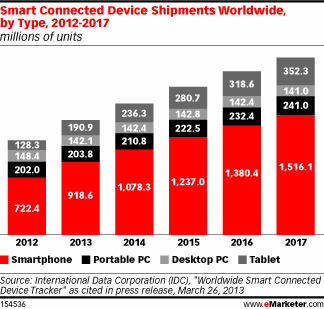
2. Smartphones will overtake “simple” phones in sales for the first time in 2013
This is finally becoming a reality! Global sales of smartphones will overtake “feature phones” thanks to a significant reduction in prices and the spread of 3G / 4G networks. IDC predicts smartphone shipments in 2013 at 918.6 million units, which will be about 50.1% of the total shipments in the industry. High demand is provided by developing countries with a large population: China, India, Brazil. Marketers must fundamentally change their marketing strategies to respond to these radical changes in the structure of user devices and their corresponding consumption patterns.

3. Mobile devices capture our media attention
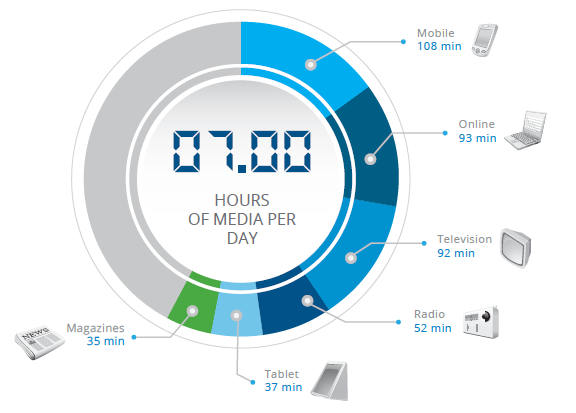
Mobile Internet users are already spending more time on their devices, even than watching TV. The average time for using smartphones is 108 minutes from the total 7 hours of media consumption per day, ahead of the use of computers (93 minutes) and TV (92 minutes). Tablets (37 minutes) take 5th place in media consumption, already catching up with the radio (52 minutes).
4. Mobile traffic is growing rapidly, unlike the cost of mobile advertising
Mobile accounts for 15% of total Internet traffic and its share is growing, on average, by 50% per year (and most likely, the growth rate will only accelerate). Nevertheless, advertising budgets are not in a hurry to follow the users of mobile devices. Even countries with developed mobile advertising like the United States, the discrepancy between the media influence and advertising costs is about $ 20 billion.
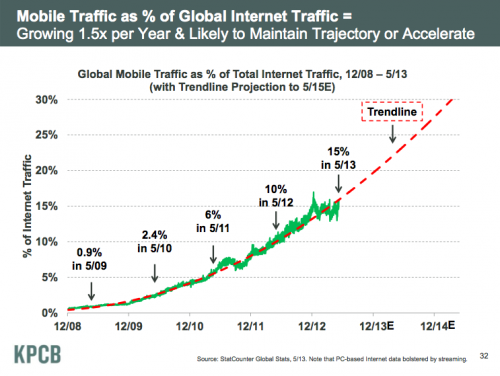
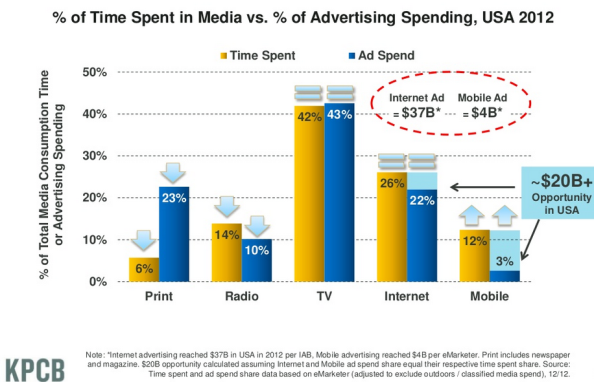
5. Mobile applications left mobile Internet far behind
The popularity of mobile applications is constantly growing. Mobile app impressions represent 75-80% of the total. According to the survey, 27% of respondents said they used 6-10 applications in the last 30 days. Whether it’s a brand manager looking for a point of contact with consumers or a media planner looking for a target audience, mobile applications will play a major role in this.
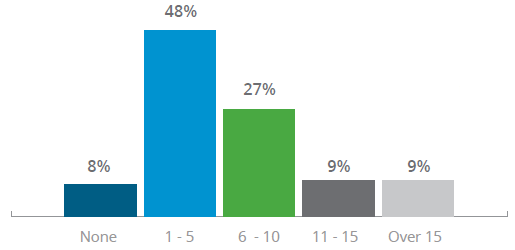
6. Multi-screen on the rise
Multiscreening is a phenomenon of simultaneous use by a consumer of more than 1 device. So, approximately 62% of consumers combine the use of a mobile device with watching TV. Among an audience of 20-34, on average, 69% of consumers search on their mobile devices for the information they just saw on TV. These facts have a huge impact for marketers, as advertising campaigns can become truly multi-channel and complementary.
7. Rich Media Formats Affect Consumer Engagement
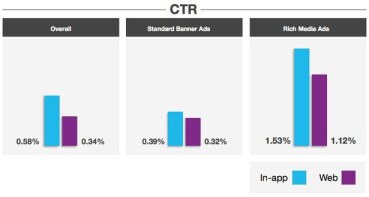
Mobile gives brands space for creativity and creativity in advertising, which is still limited to TV. Rich Media mobile advertising is up to 4 times more effective than standard banners in terms of CTR. Also, mobile ads placed within applications are, on average, 1.7 times more effective in relation to mobile Internet. Rich Media mobile advertising reaches a clickthrough rate of 1.53% when displayed within applications and “only” 1.12% on the mobile Internet (which is also a very good result). In comparison, standard banners have a clickthrough rate of 0.39% and 0.32%, respectively.
8. Consumers do not mind mobile advertising
Brands and marketers are looking for interactions with consumers through their mobile devices all day. Our gadgets are always online, increasing the chances of an advertising message being seen. According to studies, 59% of all users of mobile devices relate to mobile advertising, as well as to TV advertising and advertising on the "big" Internet.
9. Mobile advertising as close as possible to the purchase

Mobile advertising directly affects customer behavior. According to the study, 75% of all respondents said they discovered something new using their mobile devices. And almost half (46%) said they bought something using their mobile devices. And 45% of respondents said that ads seen on their smartphones and tablets directly influenced their choice directly in the store. Indeed, many people no longer part with mobile devices, even being directly in front of shelves with goods.
Only registered users can participate in the survey. Please come in.
In your opinion, in what year will mobile advertising “shoot” in Russia?
- 0.7% 2013 1
- 13.1% 2014 18
- 20.4% 2015 28
- 9.4% 2016 13
- 8% 2017 11
- 22.6% Yes, for a long time "shot" 31
- 25.5% Never Will This 35
